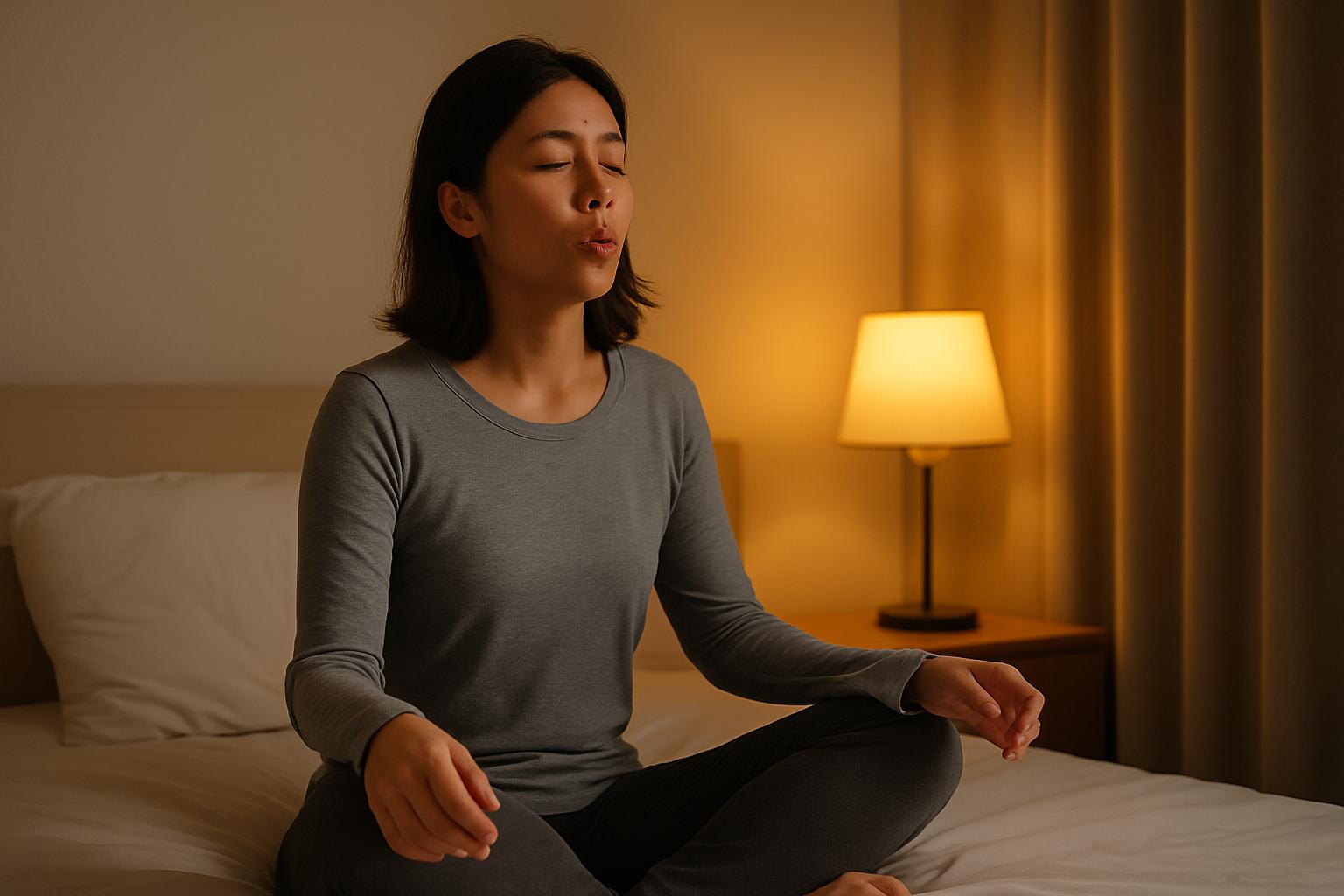Soothing Cough Relief for Kids: Acupressure Points for Children’s Cough Management
Seeing your child suffer from a persistent cough can be distressing, but acupressure offers a gentle way to provide relief. As a parent or caregiver, the health and comfort of your child is always a top priority, especially when they are unwell. Acupressure, rooted in the ancient wisdom of Traditional Chinese Medicine (TCM), presents itself as a non-invasive and child-friendly approach to health care. It’s a practice that can be safely applied to children, offering a soothing touch in times of discomfort.
This guide focuses specifically on acupressure points for children with cough. We aim to walk you through simple yet effective acupressure techniques that are tailored to alleviate coughs in young ones. Whether it’s a seasonal cough or something more persistent, these points have been carefully selected for their suitability and efficacy in pediatric care.
Rest assured, the information and techniques provided here are reliable and safe. We have consulted Dr. Mengfei (Devin) Yuan, a respected Professor at Fundación Europea de Medicina Tradicional China in the Tarragona Area of Spain, to ensure the accuracy and effectiveness of our guidance.
Are you ready to learn how to gently ease your child’s cough with acupressure? Let’s delve into these simple, yet powerful techniques that can bring comfort and relief to your little one.
What Causes Persistent Cough In Children?
Traditional Chinese Medicine distinguishes between six types of cough in children: wind-heat, wind-cold, heat phlegm, damp phlegm, yin deficiency, and qi deficiency. Effective treatment begins with diagnosis. Selecting the best acupressure points for children with cough will depend on correctly identifying the kind of cough. This is determined by the color of the sputum, the sound of the cough, and other symptoms the patient presents.
What Are The Acupressure Points For Children With Cough?
Acupoint: Ren-17 (other names: Conception Vessel 17/ Dan Zhong/ Point of Sea of Qi )

One of the most important acupressure points for children with cough is Ren-17. This conceptual vessel acupoint is located on the chest. You can find it easily by tracing a finger along the midline of your chest to the 4th intercostal space, which is the space between the ribs). Ren-17 is in this 4th intercostal space, at the midpoint between your two nipples.
In TCM, Ren-17 is responsible for tonifying the heart and lungs, strengthening the air function of the lung, stopping cough, and facilitating the removal of phlegm. This is why it is mostly used clinically to treat chest congestion and breast problems. It is also one of the acupressure points for sleep that you can easily press to improve your sleep.
To unlock the healing benefits of Ren-17, use your palm to do downward vertical strokes from your chest to your belly button for 5-10 minutes. Then use your thumbs to push laterally along the space between two labs to the underarm line for another 5-10 minutes.
Massaging this pressure point for kids’ cough is so effective that Dr. Mengfei Yuan uses it for children with chronic coughs.
Acupoint: LU-1 (other names: LUNG 1/ Zhong Fu/ Middle Mansion)
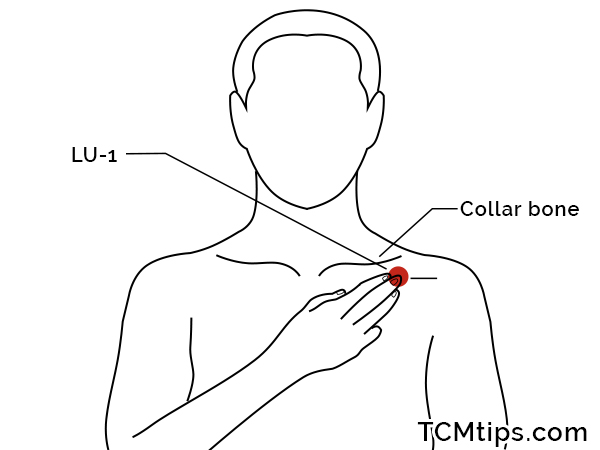
LU-1 or Zhong Fu as it is called in Chinese is another acupressure point for cough in children that is located on the chest. To locate this lung meridian acupoint, locate the first intercostal space in the midline of your chrest, then measure 7 finger-width from that point to the chest. This will take you to a depression on the upper edge of the chest, below the collarbone.
Zhong Fu plays an important role in TCM in regulating and activating the Lung Qi. It also clears and removes fullness of the lung as well as clear the heat in the lung. This makes it the right pressure point to press when you have a cough from Qi stagnation.
Because LU-1 is located at the surface of the lung, it is best to use moxibustion. Dr. Mengfei uses this point for patients who get a cough from Qi stagnation. This point is at the surface of the lung, so we usually use the moxibustion, Gua Sha, to massage instead of needles. For example, sometimes we apply moxibustion to the LU 1 and CV 17. We light up one pure roll to heat these two points (keep 1-2 cm distance from the surface of the skin) for 15-20 minutes. Or use Gua Sha bar to rub the point 5-10 minutes until the point turns a little red.
Acupoint: Ren-22 (other names: conception vessel 22/ Tian Tu/ the chimney of heaven)

Conceptual Vessel 22 also known as Tiantu in Chinese is another effective acupressure for cough in kids. Unlike the first two pressure points discussed, Tiantu is located in the neck. You’ll find it in the midline of the neck or the suprasternal fossa, which is that depression at the base of the neck, between the beginning of the two collar bones.
In TCM Ren-22 is responsible for regulating the lung Qi and strengthening the air function of the lung. It also helps to descend phlegm and ascend the lung Qi. Based on these functions, this acupoint is used clinically to treat cough, asthma, and chest pain.
China Journal of Traditional Chinese Medicine and Pharmacy, 2009 ( S1,110-111) recommended that you press Tian Tu to treat a kid’s cough with wind-heat syndrome. The researchers in the article used this to get effective results from 150 cases after 5 days of continuous treatment on the Tian Tu.
So like this clinical experiment, Dr. Mengfei advises that you can also pinch or press the Tian Shu gently for 5-10 minutes. If your child still coughs so heavily, you can press the point with a little strength, and try to press downward or internally along the posterior border of the manubrium of the sternum.
Acupoint: LU-10 (Other Names: Lung-10/Yu Ji/Fish Border)

Activating the Yu Ji, as it’s known in Chinese, expels heat from the lungs and eases congestion in the sinuses. This point on the lung meridian has long been regarded as one of the best acupressure points for fever and colds.
The LU-10 acupressure point is indicated for coughs with yellow or green phlegm and also provides a number of benefits to the throat. One of the primary acupressure points in the hand for cough and cold for kids, LU-10 can be used in the treatment of throat infections, fever, cough, and asthma.
You can find this lung meridian point on the fleshy part of the palm, below the thumb, on the radial aspect of the midpoint of the first metacarpal bone. Apply firm pressure here while breathing slowly.
Acupoint: LU-5 (Other Names: Lung-5/Chi Ze/Cubit Marsh)
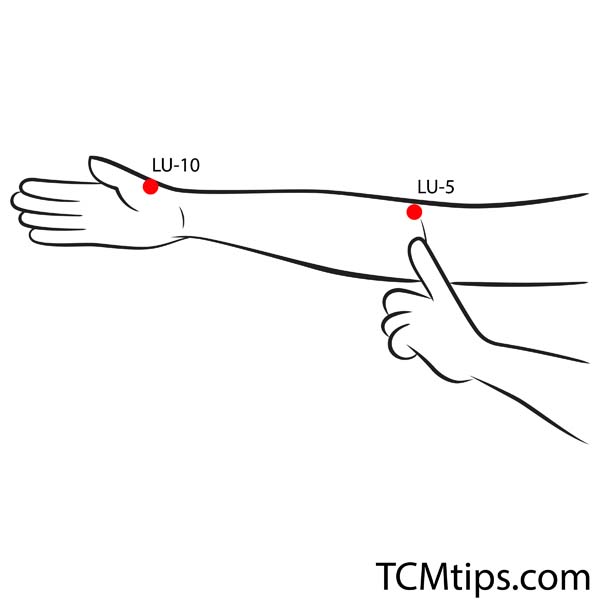
Stimulation of LU-5 helps to improve the flow of air through the lungs. Known as the Chi Ze in Chinese, it’s one of the primary acupressure points for cold and for cough in children.
In Traditional Chinese Medicine, the Chi Ze is used to clear heat from the body, relax the sinews, and expel phlegm from the lungs, making it an ideal point for treating cough and sore throat, as well as asthma and infantile convulsions.
The Chi Ze point is located on the elbow crease, on the radial side of the tendon of the muscle biceps brachii, when the elbow is slightly flexed. If your child is sick or coughing and cannot sleep at night, try applying gentle pressure to this point on the arm. Massage the point for a few seconds, relax, then repeat. Do the same for both arms.
Acupoint: LU-6 (Other Names: Lung-6/Kong Zui/Maximum Opening)

Another one of the excellent acupressure points for cough located on the lung meridian is the Kong Zui, or “Maximum Opening.” Stimulation of LU-6 may help to improve circulation, release heat congestion in the body, and provide relief from a sore throat. This point is used primarily for dry coughs.
The LU-6 acupoint is located on the inner part of the forearm, three cun below LU-5, or roughly halfway between the wrist crease and the elbow crease. Apply firm pressure on this point to relieve your child’s symptoms and ease their cough. Encourage your child to breathe in and out slowly as you press for ten seconds at a time.
LU-6 has also shown effectiveness in reducing swelling and inflammation in the arms and is often selected for needling in acupuncture for tendonitis.
Acupoint: ST-25 (Other Names: Stomach-25/Tian Shu/Celestial Pivot)
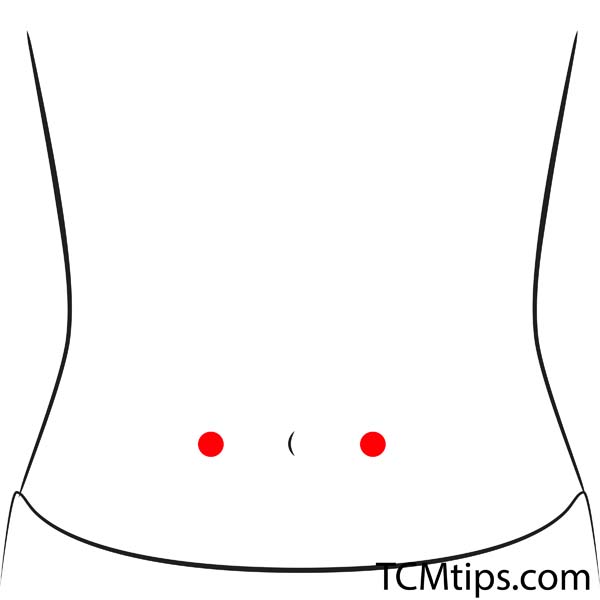
The first of our acupressure points for children with cough not located on the lung meridian, ST-25 functions as a regulator of the spleen, the stomach, and the intestines. Stimulation here helps to dispel dampness and damp-heat from the body, making this an effective point for treating cold and flu symptoms caused by internal dampness.
Although it is located on the stomach, around one-and-a-half finger widths out from the navel, ST-25 is also an effective point for acupuncture for swollen ankles.
Once you’ve located ST-25, massage the point in a circular motion, bringing warmth to the stomach.
Acupoint: Bl-13 (Other Names: Urinary Bladder-13/Fei Shu/Lung Transporter)

One of the primary acupoints used in acupressure for sinus inflammation, Bl-13 is also an excellent acupoint for treating cough in children.
Stimulating Bl-13, known as the Lung Transporter, helps to open the chest and improve lung function. It’s effective for a wide range of respiratory conditions.
The acupoint is found between the shoulder blade and the spine. Warm this acupoint with a towel, then apply gentle pressure for up to a minute.
Is Acupuncture Effective For Cough?
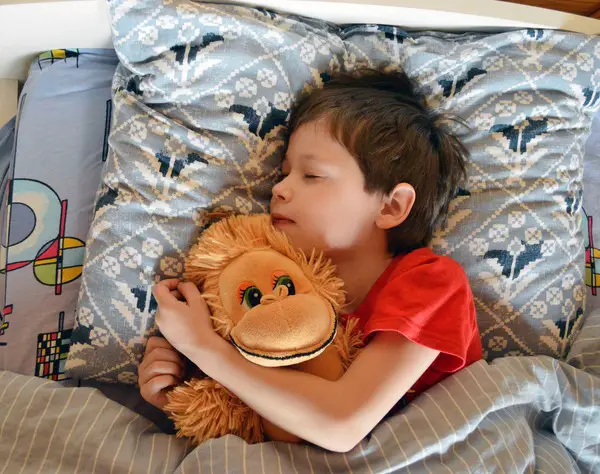
In clinical trials, acupuncture has outperformed conventional drug therapy for the treatment of chronic coughing following a respiratory infection. One controlled trial conducted in China compared acupuncture with methoxyphenamine treatment. The researchers employed acupoints on the Lung and Stomach meridians in accordance with TCM treatment principles. The treatment of chronic coughing depends on expelling wind to release pathogenic influences and dredging the lungs to clear toxins and phlegm from the respiratory system. Acupuncture and herbal plaster therapy at these particular acupressure points for cough in children were found to improve patient outcomes for children with chronic coughing receiving standard drug therapy.
In a meta-analysis of 11 randomized controlled clinical studies comprising 929 patients with cough-variant asthma, acupuncture was shown to enhance clinical effectiveness rate, relieve symptoms of cough, phlegm, and diaphragmatic congestion, and improve lung function.
Conclusion
- Ren-17 helps to tonifies the heart and lungs, strengths the air function of the lung, stops cough, and facilitates the removal of phlegm.
- LU-1 regulates and activates the Lung Qi.
- Ren-22 regulates the lung Qi and strengthens the air function of the lung.
- LU-10 is indicated for coughs with yellow or green phlegm.
- LU-5 helps to improve the flow of air through the lungs.
- LU-6 improves circulation, releases heat congestion, and eases a sore throat.
- ST-25 expels dampness and damp-heat from the body.
- Bl-13, the Lung Transporter, opens the chest and improves lung function.

Try our Anti-Aging Gua Sha Tool designed to bring out your skin’s natural glow.
Best Gua Sha Product- Anti-Aging: The tool is designed to target 11 specific aging signs such as wrinkles and sagging skin. By following the 7-step routine, users can improve skin firmness and reduce fine lines naturally.
- Enhances Skincare Routine: It works effectively with serums and lotions, boosting absorption and efficacy of skincare products.
- Visible Skin Improvement: Users can expect a smoother complexion, reduced puffiness, and a more youthful appearance.
 P. Sze
P. Sze 







